Higher Electricity Bills in Haryana as Fuel Surcharge Rises
Higher Electricity Bills in Haryana as Fuel Surcharge Rises
As per the recent order (March 2015) by HERC, the FSA recoverable from the State Government on account of sale of power to agricultural pumpset consumers is as under.
| FY | Amount to be recovered from Government for Agriculture subsidy (Rs CR) |
| 2008-09 | 344.27 |
| 2009-10 | 961.49 |
| 2010-11 | 415.48 |
| 2011-12 | 753.13 |
| 2012-13 | 615.27 |
| 2013-14 | 725.93 |
| Total | 3815.57 |
Now the above money will be recovered from all other consumer categories except agriculture as the Haryana government has not paid the above subsidies back to the Discoms. So the electricity consumers of Haryana will pay the subsidy bill of Agriculture pumpsets!
Added to the above, as per HERC orders, the Discoms will recover the balance unrecovered amount of FSA Rs 3591.5 Cr from the Haryana consumers as apparently the consumers have not paid fully the Fuel Cost in last few years (fro 2010-11).
So overall, the electricity consumers of Haryana are indebted to the Discoms of Rs 7407 Cr. As such the Discoms will keep recovering the FSA for the times to come till all this money is recovered from the consumers. The approved FSA rates at which the Haryana consumers have to pay are as follows –
| Category | FSA Rs per Unit | |
| 1 | Domestic Supply | |
| 0-40 | 0.43 | |
| 41-250 | 0.72 | |
| 251-500 | 0.85 | |
| 501-800 | 1.27 | |
| Above 800 | 1.27 | |
| 2 | Non Domestic Supply / Commercial | |
| Upto 5 kW (LT) | 1.19 | |
| Above 5 kW and Up to 20 kW (LT) | 1.2 | |
| Above 20 kW upto 50 kW (LT) | 1.27 | |
| Existing consumers above 50 kW upto 70 kW (LT) | 1.29 | |
| Consumers above 50 kW (HT) | 1.21 | |
| 3 | HT Industry (above 50 kW) | 1.24 |
| Arc furnaces/ Steel Rolling Mills | 1.24 | |
| 4 | LT Industry – upto 50 kW | |
| Upto 10 KW | 1.21 | |
| 10 KW to 20 KW | 1.21 | |
| 20 KW to 50 KW | 1.29 | |
| Existing consumers Above 50 kW upto 70 kW (LT) | 1.32 | |
| 5 | Bulk Supply | 1.25 |
| 6 | Bulk Supply (Domestic) (70 kW and above at 11 kV or above voltage) | 1.15 |
Note that the FSA charges are over and above the normal demand and energy charges that a consumer pays to the Discoms.
The FSA charges are generally not increased in the Discom’s tariff orders. They are revised every quarter and are expected to reduce at certain times when the fuel cost goes down. However, with this order in place, it seems that the Haryana electricity consumers will keep paying a high FSA for eternity!
Suggested Articles
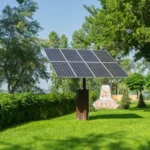
Solar Power Park Scheme: Central Government Expands Clean Energy Initiative
The Union government plans to launch the second phase of a dedicated program to develop solar parks across the country that will aim to plug loopholes and overcome slow progress.
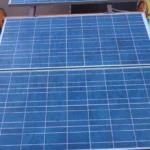
Rooftop Solar for Factories: Maximum kW You Can Install
Industrial rooftop solar guide: Understand KW capacity limits, installation guidelines, and best practices for factories and manufacturing units

Solar String Sizing Check: Did Your Installer Get It Right?
Worried your rooftop solar strings might be sized incorrectly? Check these tips to ensure your Solar PV system is installed for maximum efficiency and safety
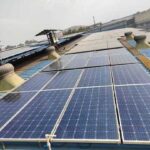
Solar Panel Sizes and Features in Delhi/NCR: A Complete Guide
Planning to install solar panels in Delhi/NCR? Explore the different sizes, technologies, and key features of solar panels available for residential, industrial, and commercial use. Learn how to choose the right one for your energy needs and roof space.

Solar Rooftop Projects: Benefits of Intentional Islanding for Power Backup
Discover the role of intentional islanding in solar rooftop projects. Ensure continuous power supply, system safety, and reliable energy even during grid failures.
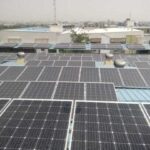
How Installers Cut Costs on Solar PV Module Mounting Structures
Solar PV mounting structures can significantly impact project cost. Explore how expert installers optimize design, materials, and labor to achieve safe, durable, and cost-effective solar installations
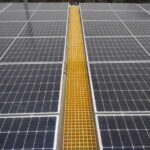
Case Study: Successful Design, Installation, and Commissioning of a 50 kWp Rooftop Solar PV Plant
This case study details our experience in designing, installing, and commissioning a 50 kWp solar PV rooftop power plant. Learn how we overcame technical challenges, optimized system performance, and delivered clean, reliable energy. Discover insights on panel selection, inverter sizing, monitoring, and commissioning processes that ensured maximum efficiency and long-term performance for the rooftop solar installation.
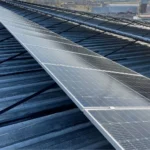
BOOT vs PPA Explained: Find the Best Way to Finance Your Solar Plant
Choosing between the PPA and BOOT models can significantly impact your solar savings. This guide compares both financing options to help businesses make the right decision.
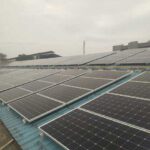
How a String Monitoring Box Works in Residential Solar Systems
Understand how a string monitoring box helps track and protect your home solar panels for maximum efficiency and safety
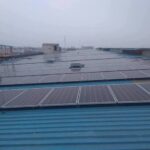
Rooftop Solar: Reduce Your Electricity Bill and Increase Savings
Discover how installing a rooftop solar system can help you save on electricity bills, reduce peak demand charges, and take advantage of government incentives.